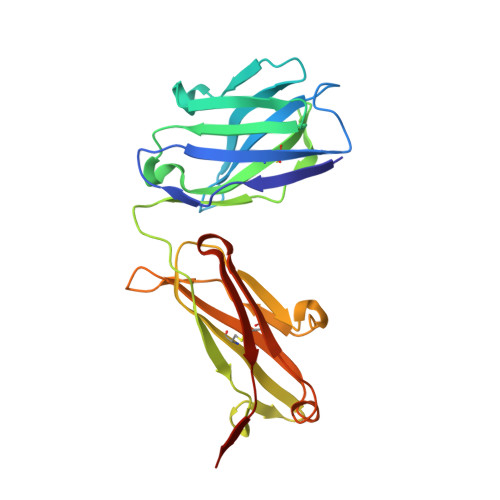Biochemical and biophysical characterization of natural polyreactivity in antibodies.
Borowska, M.T., Boughter, C.T., Bunker, J.J., Guthmiller, J.J., Wilson, P.C., Roux, B., Bendelac, A., Adams, E.J.(2023) Cell Rep 42: 113190-113190
- PubMed: 37804505
- DOI: https://doi.org/10.1016/j.celrep.2023.113190
- Primary Citation of Related Structures:
8FZO, 8FZP, 8G19, 8G1B, 8G1C - PubMed Abstract:
To become specialized binders, antibodies undergo a process called affinity maturation to maximize their binding affinity. Despite this process, some antibodies retain low-affinity binding to diverse epitopes in a phenomenon called polyreactivity. Here we seek to understand the molecular basis of this polyreactivity in antibodies. Our results highlight that polyreactive antigen-binding fragments (Fabs) bind their targets with low affinities, comparable to T cell receptor recognition of autologous classical major histocompatibility complex. Extensive mutagenic studies find no singular amino acid residue or biochemical property responsible for polyreactive interaction, suggesting that polyreactive antibodies use multiple strategies for engagement. Finally, our crystal structures and all-atom molecular dynamics simulations of polyreactive Fabs show increased rigidity compared to their monoreactive relatives, forming a neutral and accessible platform for diverse antigens to bind. Together, these data support a cooperative strategy of rigid neutrality in establishing the polyreactive status of an antibody molecule.
Organizational Affiliation:
Department of Biochemistry and Molecular Biology, University of Chicago, Chicago, IL 60637, USA.















